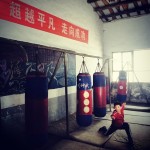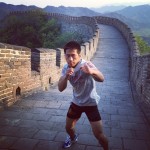Last month I went to Chen Jia Gou, just outside of Zhengzhou, Henan, to visit the birthplace of Chen Style Taiji Quan. I went with Chen Jia, a young lady who studies under the style’s current, most famous master, Chen Xiao Wang. She also opened her own school in Shanghai.
Every year in March, Chen Xiao Wang takes time out from his travels around the globe to return home and pay respects to the temple, school, and village where he was born and raised. Students from around the country – and the world – come to Henan during the last week in March to join him, participate in seminars, and train with other taiji enthusiasts.
My primary interest in traveling out here was to learn more about Chen Jia, more about her master Chen Xiao Wang, and to take a good look at a “birthplace” of a style. I know Chen Jia, and consider her to be a very sincere and talented martial artist, and in conversations we had we often spoken of the level of “realness” in martial arts these days. We talked of the rise of Wushu – the competition style Wushu – and the decline in students of what we both understood to be real kungfu.
It’s easy to agree on a definition when you agree with the person you speak to. So much can be left unsaid. Hence the trip: I wanted to see what was real in Zhengzhou and what Chen Jia considered to be real kungfu.
I was, in all, pleasantly surprised.






